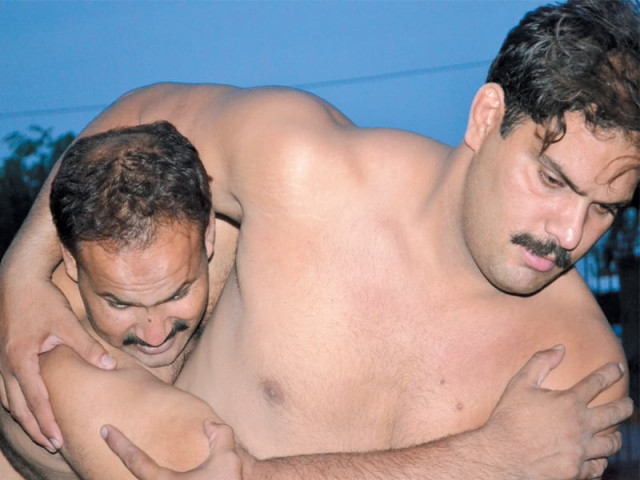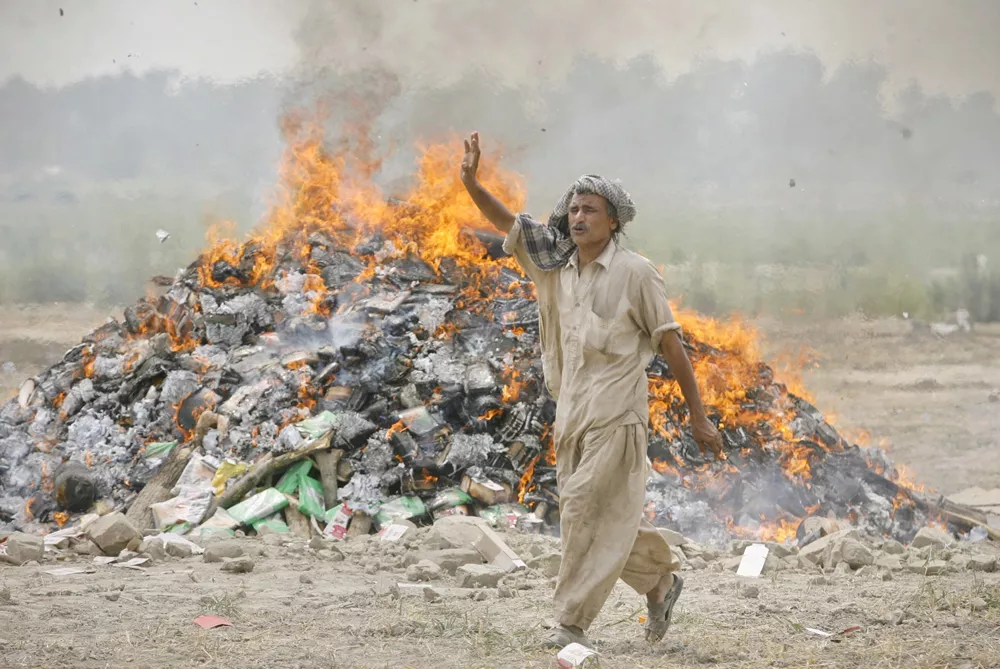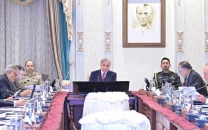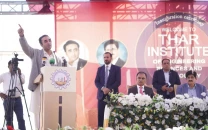Oil, sweat and dirt
Desi wrestling and its pehalwans are only a realm of storytellers now who recount the fights of the legends.

The rest of the match is a blur as they claw at each other to maintain their grips. Soon Goga Pehalwan overpowers Pappu Pehalwan, pinning him to the floor and emerging as the victor. The fight they have trained months for only lasts a few minutes.
More than thirty years later, Goga Pehalwan sits behind a large wooden desk in a factory that manufactures pipes and steel fittings. He now goes by his real name, Mohammad Afzal Lone. He is still a large man, and years of wrestling have left their mark on him — a crooked nose from an incomplete recovery after suffering a blow, a squashed ear and broken thumbs — injuries which he describes as minor as he profusely thanks God for “never really getting hurt.”
Goga fought by the old codes — on 10 marla dirt squares where fights were won as soon as you pinned your opponent’s shoulders to the ground. He represents the last generation of pehalwans who still refuse to acknowledge the new champions that fight on synthetic, padded floors and are judged according to a points system. Desi wrestling, in its purest form, now only exists in the realm of legend.
Goga was lucky enough to wrestle at a time when the sport was at its peak in a city still known for its wrestlers, Gujranwala. He learnt his craft in a small akhaara (or wrestling pit) next to the largest graveyard of the inner city.
“Wrestling was the most popular sport back in the ‘70s,” he says. Sometimes, on his way to Akhaara Rahim Pehalwan, he saw crowds so big he mistook them for funeral processions heading to the nearby graveyard only to discover they were fans who had come from other cities to watch him practise. “Four or five thousand people would show up just to watch me train a month before a fight. Now you’re lucky if you get five thousand at the match itself,” he says.
He was trained by the legendary Sultani Pehalwan, a master wrestler who had lost only one fight in his entire career. Goga remembers waking at half past midnight every night to run 13 miles to the local canal and back. Then he did 3,000 sit-ups and dunds — a variation of push-ups. When dawn broke, he took a rope attached to a massive cuboid-shaped log, looped it around his neck and used it to level the soil of the akhaara. “Sometimes, three or four men would sit on the wood to weigh it down and make it harder to drag,” he says.
On a typical day, he would wrestle with 15 men. When he wrapped up his gruelling routine, some of his fans would get on bikes and scooters and travel to his opponent’s city to watch him train and compare their moves.
“This was a time when people would close down their shops to watch Muhammad Ali box, and he wasn’t even Pakistani,” Goga says, recalling the legendary American boxer’s heyday.
“A wrestling match was like a war between cities,” says Maqbool Rabbani, a fan who followed Goga’s career in the ‘70s. “Gujranwala and Multan were the most feared cities.”
At the time, the winding streets of Gujranwala’s inner city were peppered with akhaaras filled with young boys aspiring to be wrestlers, hoping to get a shot at regional and national titles. Stories of their strength spread far and wide, along with ridiculously exaggerated rumours. In many areas, people still believe that a pehalwan from Gujranwala eats an entire roasted lamb in one go when he trains.
Goga dismisses these rumours with a wave of his hand. “I lived with four brothers, three sisters, a cousin and my parents, and my mother used to cook one kilogramme of meat for a meal. How big could my share be?” he asks. “I did love eating the parathas my mother made with yoghurt though,” he adds with a smile.
Ironically, it was the rise of the sport to an international level that brought about its downfall. Goga himself went to Sophia, Bulgaria, to participate in a world championship. “It was the Japanese that got us,” he says. “We could fight with everyone; the Russians, the Hungarians, but not the Japanese.”
As Pakistani wrestlers began fighting in international arenas, they realised they needed to adjust their moves to suit the small roped rings with padded floors that foreign wrestlers fought on. “We started fighting on mattresses,” Goga says, referring to the springy floors of the rings, “even though our fans would ask us to fight on soil and on larger grounds, and that’s what we preferred.”
Then, regulators decided to score matches differently. A fight was now won by the wrestler who accumulated the most points, not the one who pinned his opponent to the ground first. With the point system came a degree of relaxation. Wrestlers could afford to lose the first round, because more rounds would follow before the match’s end, and fights lost their sense of urgency. Regulations were changing, and desi wrestlers had to change with them.
With the changes, public interest waned and wrestlers began to earn less. Where Goga once earned between Rs200,000 and Rs300,000 for a national match, wrestlers now earn between Rs25,000 and Rs50,000 for a match that takes place only once a year.
In 1981, when Goga fought Jhara in Lahore, a crowd of 50,000 squeezed into a stadium that had a capacity of 35,000 to see the champions fight. Weighing 100 kilos, Goga was 80 kilos lighter than the massive Jhara, but he had managed to bring their previous fight in 1978 to a draw. This time, he lost the title to Jhara within two minutes. It was one of the last fights to draw such a large, raucous crowd.
Today, it is no longer possible to eke out a living as a wrestler and Goga’s sons do not wrestle. He devotes all his time to his factory, and has no protégés to pass on the art of desi wrestling to. Jhara, who continued to wrestle, died of heart failure at the age of 29 and could not school anyone.
While Gujranwala still has more akhaaras than any other city, most have shut down and two of the largest have been replaced with a cricket stadium. But some avid young men still haunt the akhaaras that remain. Acha Pehalwan’s son, Riaz Pehalwan, is often found practising with other wrestlers from the neighbourhood. They train on soil like their teachers and forefathers, but fight most of their national matches on what Goga derisively calls “mattresses.”
Despite the declining popularity of wrestling, Gujranwala remains the city of pehalwans, where matches take place every Friday. Even though crowds no longer flock to the fights in thousands, Riaz has hopes for the sport’s revival. He wants to convince Goga, who once held the title of Rustam-e-Punjab, to come to a match and train a few youngsters.
“People will come when they hear his name,” he says, with a conviction that is hard to argue with.
Published in The Express Tribune, Sunday Magazine, August 26th, 2012.



















COMMENTS
Comments are moderated and generally will be posted if they are on-topic and not abusive.
For more information, please see our Comments FAQ